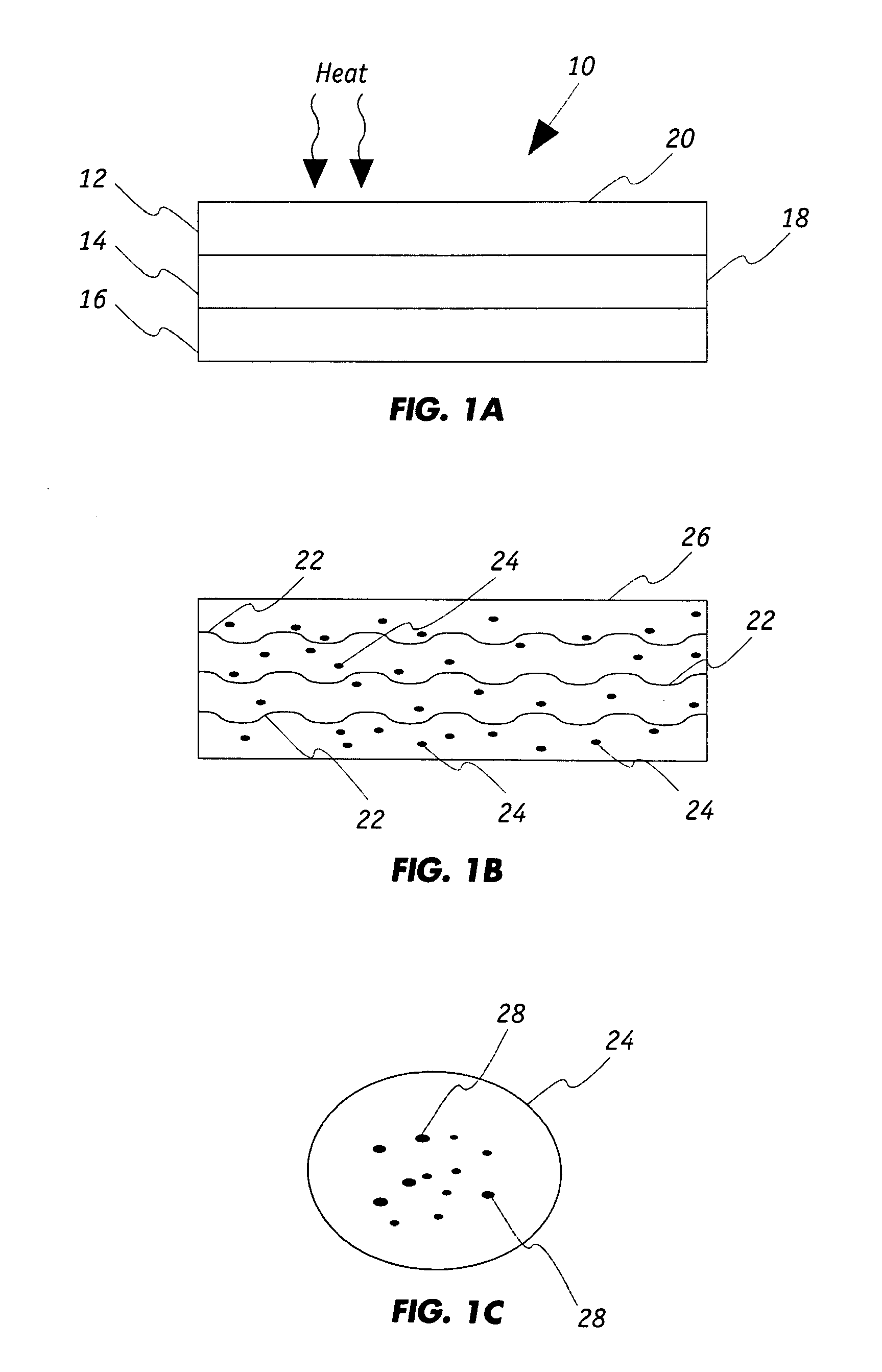Fire resistant flexible ceramic resin blend and composite products formed therefrom
a flexible ceramic and composite material technology, applied in the direction of synthetic resin layered products, cellulosic plastic layered products, transportation and packaging, etc., can solve the problems of limiting passenger safety, affecting the safety of passengers, etc., to achieve the effect of superior capability and higher strength retention
- Summary
- Abstract
- Description
- Claims
- Application Information
AI Technical Summary
Benefits of technology
Problems solved by technology
Method used
Image
Examples
Embodiment Construction
[0051]Fire resistance testing (as specified in FAR 25.853) of the invention's composite laminates have passed FAA fire penetration testing certified by National Technical Systems (NTS) Fullerton, Calif. at 2000° F. for 15 minutes with 80% strength retention and greater durability capability and FAA heat release (peak 2 and total heat release of 1.5 kW / m2 with pass requirement of 65 for both heat release rates and total heat release) and with minimal smoke density fire testing and minimum Boeing BSS 7239 toxicity testing certified by TestCorp, Mission Viejo, Calif.
[0052]Heat resistance cab fleet durability testing (under confidentiality agreement) of the invention's composite seals and sealants have endured over 4 years internal combustion (IC) engine pressurized severe exhaust manifold temperatures without a loss in seal performance or burn through from exhaust gas at sustained and spike temperatures approaching 1000° C.
[0053]To accomplish the above product performance, the resin bl...
PUM
| Property | Measurement | Unit |
|---|---|---|
| lengths | aaaaa | aaaaa |
| temperatures | aaaaa | aaaaa |
| temperature | aaaaa | aaaaa |
Abstract
Description
Claims
Application Information
 Login to View More
Login to View More - R&D
- Intellectual Property
- Life Sciences
- Materials
- Tech Scout
- Unparalleled Data Quality
- Higher Quality Content
- 60% Fewer Hallucinations
Browse by: Latest US Patents, China's latest patents, Technical Efficacy Thesaurus, Application Domain, Technology Topic, Popular Technical Reports.
© 2025 PatSnap. All rights reserved.Legal|Privacy policy|Modern Slavery Act Transparency Statement|Sitemap|About US| Contact US: help@patsnap.com


